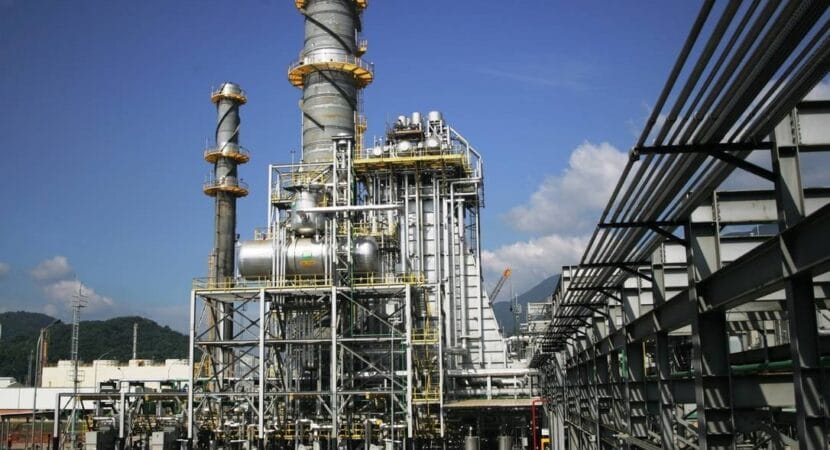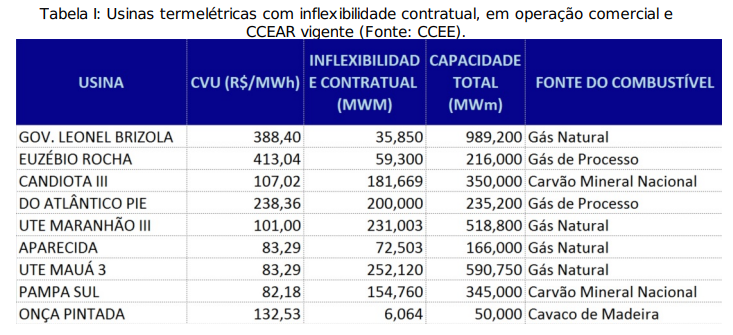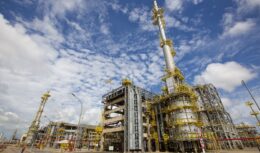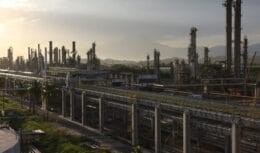
MME seeks to make thermal plants more flexible, with nine units meeting the established criteria.
O Ministry of Mines and Energy prepared a proposal with the aim of reducing the inflexibility of thermoelectric contracted in the regulated environment. The purpose is to reduce costs and optimize the use of these plants in situations of excess energy supply in the National Interconnected System (SIN).
Understand: Contractual inflexibility refers to the minimum quantity that a thermoelectric plant is required to generate, independently, to comply with the Electricity Trading Contracts in the Regulated Environment (CCEARs) – without requiring centralized authorization by the National Electric System Operator (ONS). The idea of inflexibility is to represent the contractual conditions of the fuel used, which normally has a take-or-pay clause (that is, payment regardless of consumption).
O Ministry of Mines and Energy (MME) began a public consultation, lasting 20 days, to receive contributions regarding the guidelines of the proposed ordinance. A total of nine plants contracted in the regulated environment are in commercial operation and would be affected by the new rules, and it is essential to consider all aspects before implementing them.

Conciliation of Interests in the Energy Sector
The Ministry of Mines and Energy emphasizes, in a technical document, that the objective is to find a balance between the interests of electrical system as a whole and the interests of sector companies.
when there is a A lot of energy offer generated by fonts renewable, energy producers contracted based on availability can request a reduction in inflexibility his contract for a specified period, which consequently affects the revenue do contract No. regulated environment.
In return, the generator will have the freedom to negotiate or give another destination to the fuel that would originally be used in the operation of the plant.withouta, without compromising its availability to meet the National Interconnected System in case of order from the National Operator of the Electrical system faced with a systemic need. This will allow the agent to generate revenues with the commercialization of fuel and will provide greater flexibility in portfolio management. In case of natural gas, this flexibility can even contribute to increasing market liquidity and, in the future, enable the emergence of a potential secondary market.
The reduction of inflexibility No. Short Term Market provides benefits for distributors who hired auwithouta, allowing the acquisition of less energy, which results in financial savings.
Furthermore, consumers of these distributorwill stop paying part of the revenue fixed of thermoelectric No. contract regulated. They will also be protected against increases in PLD, which guarantees that there will be no financial burden compared to the normal contractual situation.
The value to be set for the energy export will be established based on the reduction of the payment of Revenue Fixed associated with contracts, expressed in R$/MWh. Furthermore, the maximum period for this export will be limited to two months.
The export process will be intermediated and operated by the ONS and the Electric Energy Trading Chamber (CCEE), with supervision by the Electrical Sector Monitoring Committee (CMSE), in accordance with the rules established based on the guidelines of the proposed ordinance.
Optimizing energy generation brings challenges to National Interconnected System
The Ministry of Mines and Energy (MME) highlights in a technical statement that the National Interconnected System (without) is dealing, this year, with a significant increase in energy availability, mainly due to the favorable level of reservoirs and the uwithoutas hydroelectric plants and the increase in the generation of renewable energy, such as wind and solar. In this context, thewithoutas thermoelectric They can continue generating energy even when it is not needed in the system as a whole.
The MME emphasizes that the presence of energy surpluses can increase competition between different energy sources and make it difficult to fully allocate available energy to meet system demand.
The folder highlights that the inflexibility of thermoelectric generation can trigger wasted spills in hydroelectric plants, restrictions on the distribution of energy of uwithoutas wind farms e solar, resulting in inefficiency for the National Interconnected System (without). This is especially worrying considering that the operating costs of thermal plants are higher than those of renewable.
The objective is to preventwithoutas thermoelectric generate electricity in an inflexible way, due to contractual restrictions, in situations where the electrical system is being adequately supplied by more economical sources. This could result in excess energy generated by these thermoelectric.
Source: EPBR Agency












